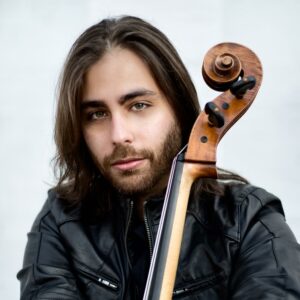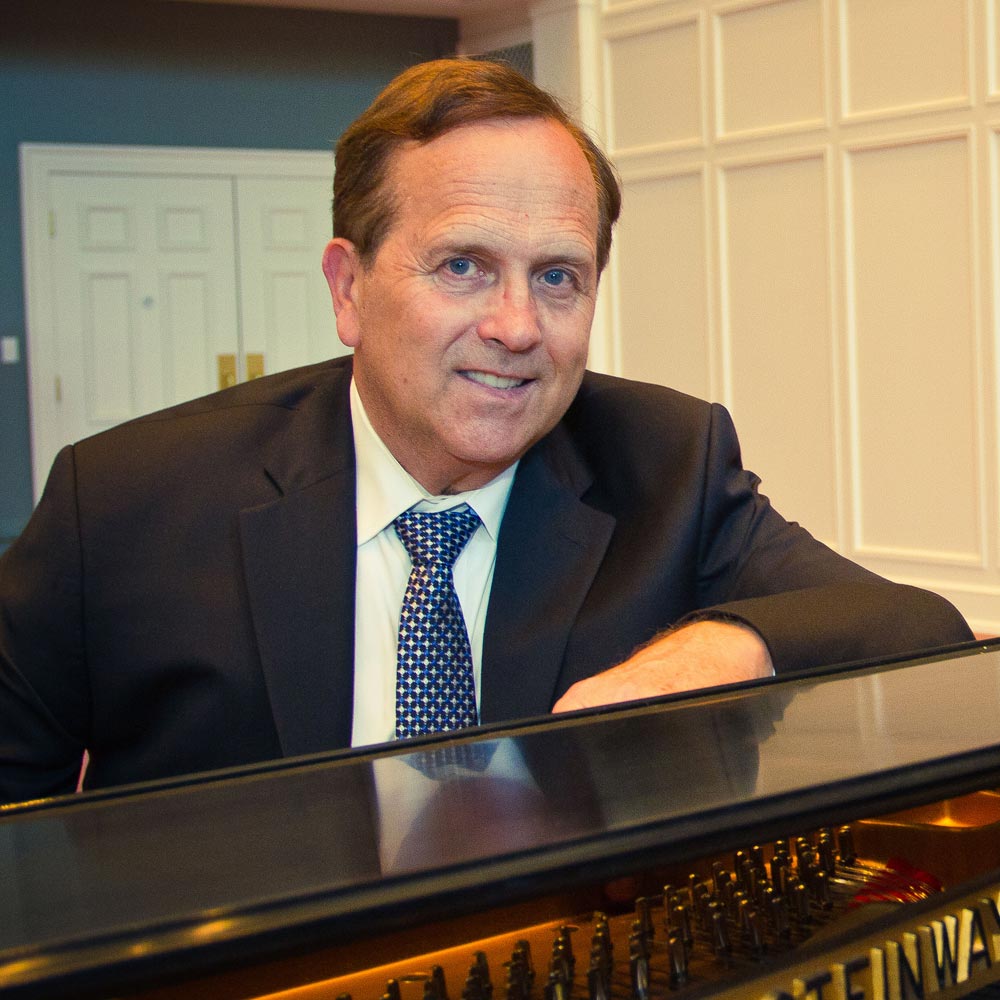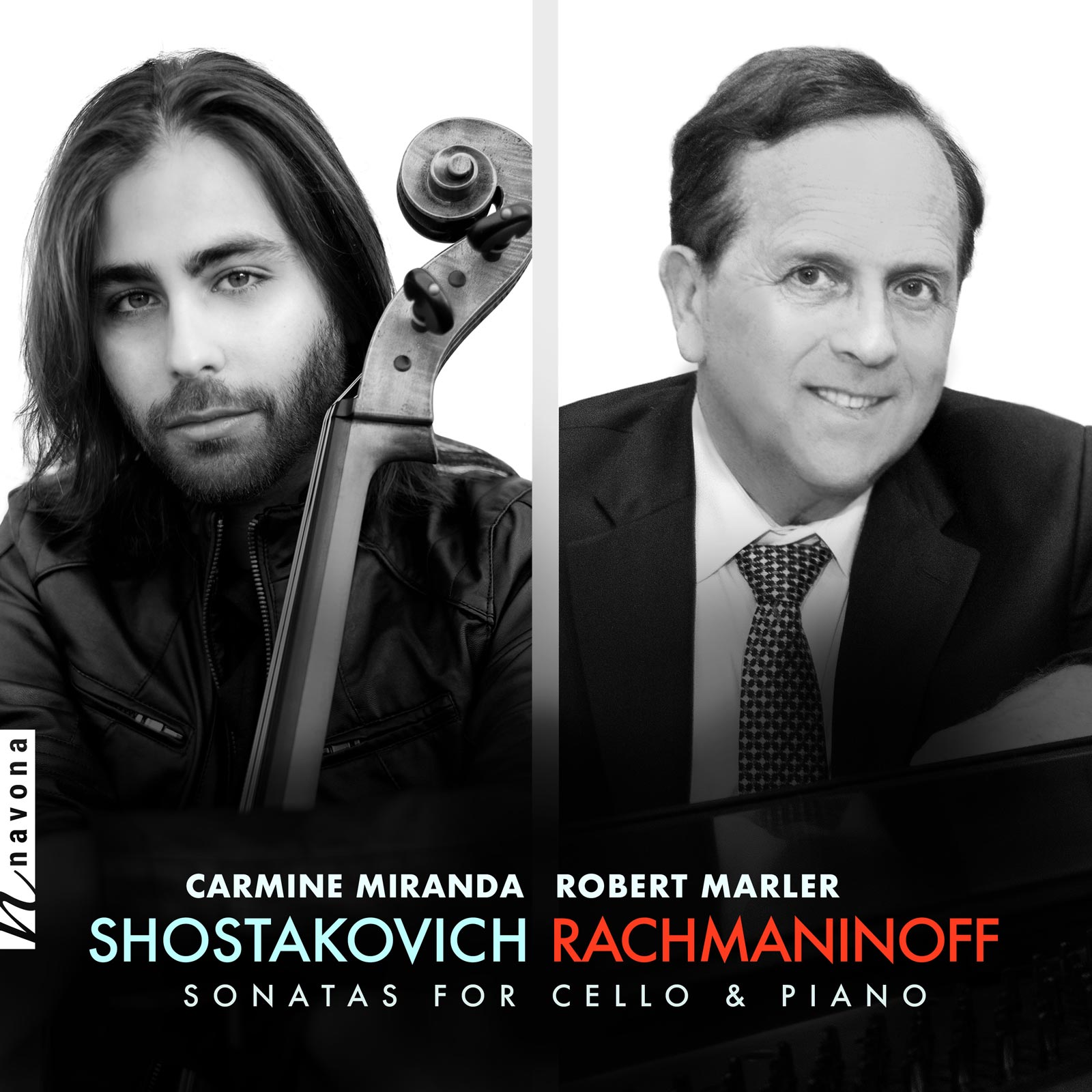Shostakovich & Rachmaninoff: Sonatas for Cello & Piano
Carmine Miranda cello
Robert Marler piano
Dmitri Shostakovich composer
Sergei Rachmaninoff composer
Navona Records presents SHOSTAKOVICH / RACHMANINOFF: SONATAS FOR CELLO AND PIANO, an album that highlights the musical expression and virtuosity of these renowned works.
Acclaimed award-winning soloist Carmine Miranda and GRAMMY-nominated Nashville Symphony pianist Robert Marler combine their virtuosity with the legendary three-time GRAMMY-nominated producer Alan Shacklock and celebrated mastering engineer Tommy Dorsey (Berlin Philharmonic – Deutsche Grammophon) to deliver the highest quality performances of these works.
Deeply expressive with interplay and virtuosic passages, these two sonatas are held to high regard by pianists and cellists alike. Once turning points in the lives of Shostakovich and Rachmaninoff, these works have stood the test of time, rewarded with commanding performances by cellist Carmine Miranda and pianist Robert Marler.
Listen
Stream/Buy
Choose your platform
"They are, I feel, more than a match for more recent rivals."
Track Listing & Credits
| # | Title | Composer | Performer | |
|---|---|---|---|---|
| 01 | Sonata for Cello and Piano in D minor, Op. 40: I. Allegro non troppo - Largo | Dmitri Shostakovich | Carmine Miranda, cello; Robert Marler, piano | 10:59 |
| 02 | Sonata for Cello and Piano in D minor, Op. 40: II. Allegro | Dmitri Shostakovich | Carmine Miranda, cello; Robert Marler, piano | 2:59 |
| 03 | Sonata for Cello and Piano in D minor, Op. 40: III. Largo | Dmitri Shostakovich | Carmine Miranda, cello; Robert Marler, piano | 7:43 |
| 04 | Sonata for Cello and Piano in D minor, Op. 40: IV. Allegro | Dmitri Shostakovich | Carmine Miranda, cello; Robert Marler, piano | 3:42 |
| 05 | Sonata for Cello and Piano in G minor, Op. 19: I. Lento. Allegro moderato | Sergei Rachmaninoff | Carmine Miranda, cello; Robert Marler, piano | 12:37 |
| 06 | Sonata for Cello and Piano in G minor, Op. 19: II. Allegro Scherzando | Sergei Rachmaninoff | Carmine Miranda, cello; Robert Marler, piano | 6:32 |
| 07 | Sonata for Cello and Piano in G minor, Op. 19: III. Andante | Sergei Rachmaninoff | Carmine Miranda, cello; Robert Marler, piano | 5:42 |
| 08 | Sonata for Cello and Piano in G minor, Op. 19: IV. Allegro mosso | Sergei Rachmaninoff | Carmine Miranda, cello; Robert Marler, piano | 10:33 |
Recorded in January & July 2021 at Masterfonics Studios & Ocean Way Studios in Nashville TN
Recording Producers Carmine Miranda, Alan Shacklock
Recording Engineer Kyle Ginther
Associate Engineer Pat McMakin
Mixing Alan Shacklock
Mastering Tommy Dorsey
Recorded on a 2005 Jules Azzi cello made in New York City, with a set of Dogal Montagnana Cello Strings handmade in Venice, Italy courtesy of Dogal Strings.
Special thanks to GMJ, Dogal Strings, Katie Rios, BeeBee, Gary Hopkins, Antoniela Saglimbeni, Alan Shacklock, and Robert and Deb Marler.
![]()
Executive Producer Bob Lord
A&R Director Brandon MacNeil
VP of Production Jan Košulic
Audio Director Lucas Paquette
VP, Design & Marketing Brett Picknell
Art Director Ryan Harrison
Design Edward A. Fleming, Morgan Hauber
Publicity Patrick Niland
Artist Information

Carmine Miranda
Award winning cellist Carmine Miranda has established an international career and recognition as a soloist, chamber musician, educator, and is a best-selling recording artist. Praised by many publications such as Fanfare Magazine for “fast becoming known for his ability to combine virtuosity with intense, well-thought-out interpretations” and by The Strad Magazine for “showing himself to be in full command of both instrument and works,” Miranda’s performances and recordings have appeared in some of the finest concert halls, music festivals, radio and TV stations, as well as PBS affiliated stations all over the United States, Europe, Latin America, and Asia.

Robert Marler
Nashville Symphony pianist Robert Marler has performed on 12 GRAMMY-winning recordings. He has participated on more than 30 recordings with the Nashville Symphony, Buffalo Philharmonic, and Nashville Chamber Orchestra. He has performed with Itzhak Perlman, Anne Akiko Meyers, and many other major classical and pops artists such as Branford Marsalis, Elvis Costello, and Brian Wilson. Marler has also performed under the baton of many renowned conductors such as Lenard Slatkin, Sir Neville Marriner, Krzysztof Penderecki, Lawrence Foster, and many others.
To learn more please visit: www.robertmarler.org

